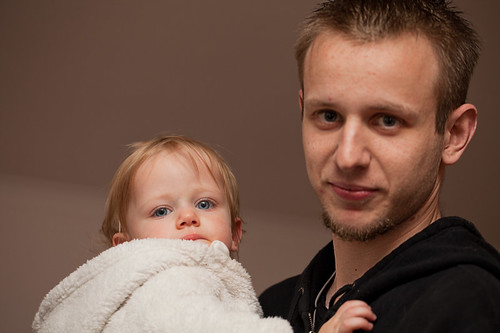Hello,
I have been thinking about this for quite a while, how do you get nice crisp images with a wide aperture? It might be that I have been reading to much about depth of fields and focal panels, but my understanding is as follows:
Wide apertures are used to isolate subjects because of the shallow depth of field but it may allow you to shoot 1 over the focal length to make sure the what ever is focused is sharp. If I have a fast lens f2.8 and I shoot at f2.8 it will make my depth of field shallow. This is problem when trying to capture image of two people and they fill the frame. The nose may be in focus but the eyes will be out of focus and if the second person is not on the same focus plane, then the results will vary.
The reason for the wide aperture are as follows:
- I don't have a tripod with me
- I cant use a flash
- My shutter speed is 1 over my focal length
- Its a low light scene
Below is an image with what I am talking about except I used a flash. In the unedited version the Father was very much out of focus. Lots of PPing has made it reasonable but I would prefer to avoid this sort of situation. I know I used a macro lens (100mm EF 2.8 L) for this shot which dramatically affects the DOF.
Maddison and Dan by nige_mar, on Flickr
Just curious, how do you get around these problems? I suspect the answer will have something to do with distance from subject as well.
Cheers
-Nigel







 Thanks useful information:
Thanks useful information: 

 Reply With Quote
Reply With Quote Add To Bookmarks
Add To Bookmarks











